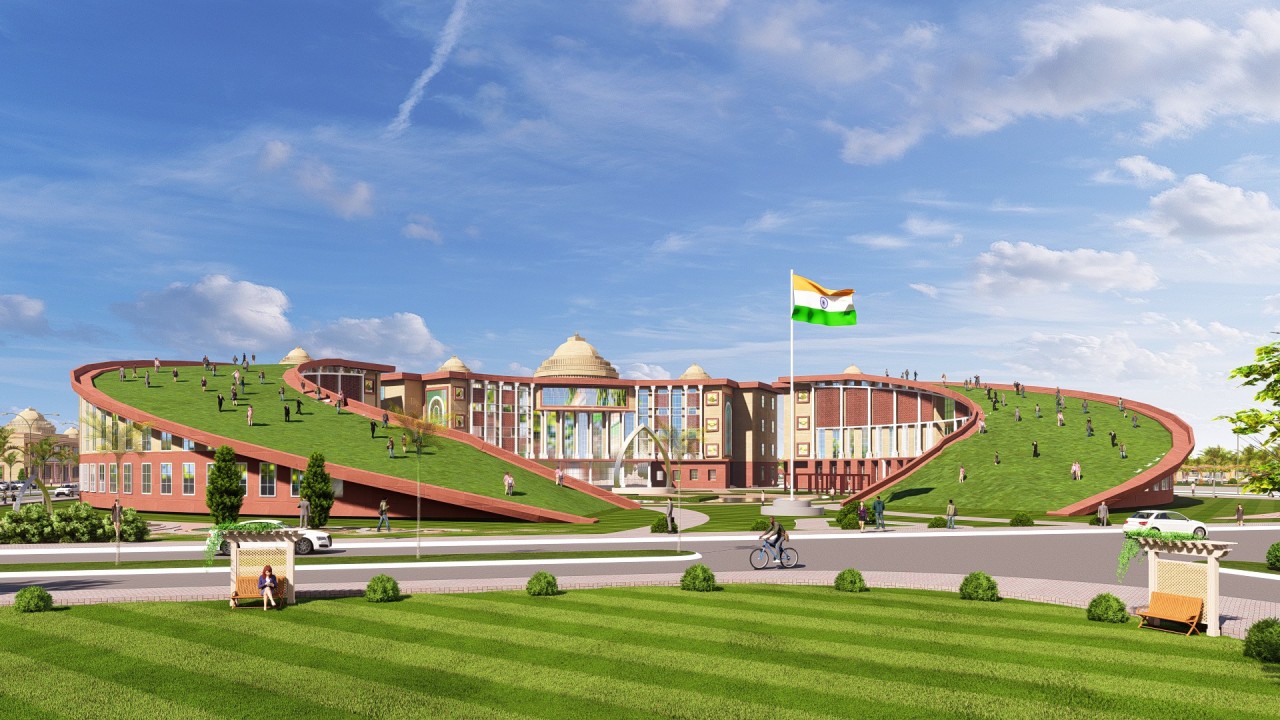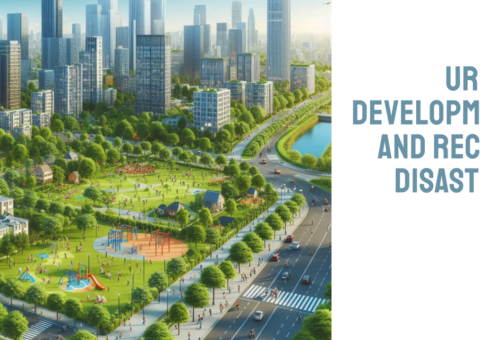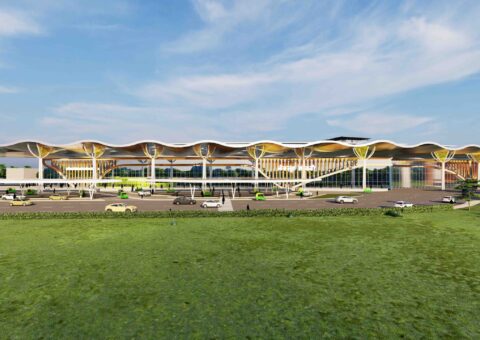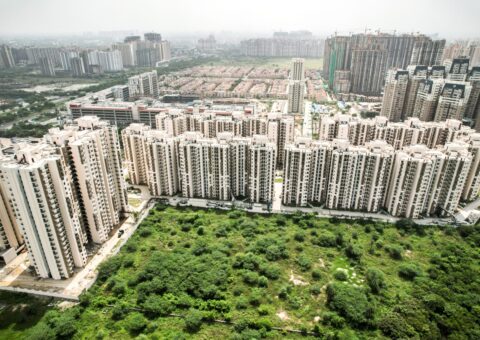Educational Ecosystems: Innovations in Modern School and University Design
With modern educational architecture, designing effective campus environments requires a strategic blend of sustainability, functionality, and community-centric spaces. Each element plays a pivotal role in shaping a conducive atmosphere for learning, fostering holistic development, and promoting well-being among students, faculty, and staff. Design innovations are essential for creating vibrant and inclusive educational ecosystems. The seamless integration of sustainability with functional design is paramount in modern educational architecture as it supports academic pursuits and enhances the overall quality of life and engagement within the campus community.
Community Spaces and Interaction
Good design principles themselves encourage innovative and creative thinking. By incorporating design thinking into the university environment, universities can create spaces that spark new ideas and collaboration among students and faculty. Beyond academic facilities, designing campus environments that prioritise vibrant community spaces is essential. These spaces serve as focal points for social interaction, cultural exchange, and interdisciplinary collaboration. Whether through centrally located plazas, outdoor amphitheatres and sports arenas, or communal dining areas, fostering a sense of belonging enhances the overall campus experience. Promoting inclusivity and diversity in shared spaces cultivates a supportive environment where individuals from diverse backgrounds thrive and contribute to a rich tapestry of campus life.
Facilitating ease of movement and accessibility throughout the campus is crucial for ensuring an inclusive educational experience. Thoughtful master planning includes pedestrian-friendly pathways, accessible facilities, and efficient transportation options. Clear signage, well-designed circulation routes, and barrier-free environments improve campus navigation and support individuals with varying mobility needs. Prioritising accessibility underscores the institution's commitment to equity and ensures that all community members can fully participate in academic and social activities.
For institutions, integrating interactive campus maps and digital signage increases operational efficiency by offering real-time updates on resource availability and campus activities. Data-driven decision-making based on insights into space utilisation and student behaviour informs strategic planning, optimising campus layout and resource allocation. Moreover, allocating designated places for interactive displays showcasing campus achievements and events contributes to community building and fosters a sense of pride and belonging among students and staff. By leveraging these benefits, educational institutions create dynamic environments that support academic excellence, innovation, and community engagement.
Sustainability and Green Spaces
Integrating sustainable practices and abundant green spaces is central to the design of a modern campus. These elements reduce the environmental footprint and contribute to a healthier and more visually appealing environment. Green corridors, landscaped areas, and biophilic design principles replace traditional hard paving, fostering biodiversity and promoting ecological balance. By embracing sustainable materials and practices, campuses create harmonious environments where built structures coexist seamlessly with nature. One our projects for the Delhi University's North Campus redevelopment embody these master planning principles of design centered on sustainability and green spaces, ensuring an inclusive approach to modern campus design.
Technological Integration
In the era of rapid technological advancement, integrating cutting-edge technologies into campus infrastructure is imperative. Smart building systems, renewable energy sources, and digital learning environments optimise operational efficiency and support innovative teaching methods. Augmented reality (AR) and interactive displays enhance engagement and facilitate personalised learning experiences. Embracing technological integration empowers campuses to adapt to evolving educational needs, preparing students for future careers in a digital age. Interactive elements can transform static learning environments into dynamic spaces - for example, walls displaying real-time data visualisations for science classes or interactive maps in history classrooms. These features can foster more profound engagement with the material and make learning more immersive.
Innovative campus design enhances the learning experience for students and provides substantial benefits to educational institutions. In today's competitive academic landscape, a university's image and presentation matter. A well-designed campus and a user-friendly online presence can make a solid first impression on prospective students, faculty, and staff. It portrays an institution that is modern, forward-thinking, and invested in providing a positive learning environment. Interactive elements like real-time data visualisations and classroom displays foster deeper engagement and comprehension of academic material, while writable whiteboards and digital platforms promote peer collaboration. These technology-enabled environments facilitate personalised learning experiences through access to additional resources and adjustable learning environments, catering to individual student needs and preferences. The Google Campus in Silicon Valley exemplifies how integrating technology with master planning principles enhances the learning experience.
Enhancing Educational Environments
Through sustainable practices, technological advancements, and community-focused design, campuses become transformative spaces that empower students, cultivate talent, and contribute positively to society and the environment. Architecture has a critical role in creating educational environments that go beyond functional spaces to become catalysts for innovation, collaboration, and lifelong learning. As architects and designers, our responsibility lies in envisioning and realising campuses that inspire, empower, and enrich the lives of all who inhabit them.
With modern educational architecture, designing effective campus environments requires a strategic blend of sustainability, functionality, and community-centric spaces. Each element plays a pivotal role in shaping a conducive atmosphere for learning, fostering holistic development, and promoting well-being among students, faculty, and staff. Design innovations are essential for creating vibrant and inclusive educational ecosystems. The seamless integration of sustainability with functional design is paramount in modern educational architecture as it supports academic pursuits and enhances the overall quality of life and engagement within the campus community.
Community Spaces and Interaction
Good design principles themselves encourage innovative and creative thinking. By incorporating design thinking into the university environment, universities can create spaces that spark new ideas and collaboration among students and faculty. Beyond academic facilities, designing campus environments that prioritise vibrant community spaces is essential. These spaces serve as focal points for social interaction, cultural exchange, and interdisciplinary collaboration. Whether through centrally located plazas, outdoor amphitheatres and sports arenas, or communal dining areas, fostering a sense of belonging enhances the overall campus experience. Promoting inclusivity and diversity in shared spaces cultivates a supportive environment where individuals from diverse backgrounds thrive and contribute to a rich tapestry of campus life.
Facilitating ease of movement and accessibility throughout the campus is crucial for ensuring an inclusive educational experience. Thoughtful master planning includes pedestrian-friendly pathways, accessible facilities, and efficient transportation options. Clear signage, well-designed circulation routes, and barrier-free environments improve campus navigation and support individuals with varying mobility needs. Prioritising accessibility underscores the institution's commitment to equity and ensures that all community members can fully participate in academic and social activities.
For institutions, integrating interactive campus maps and digital signage increases operational efficiency by offering real-time updates on resource availability and campus activities. Data-driven decision-making based on insights into space utilisation and student behaviour informs strategic planning, optimising campus layout and resource allocation. Moreover, allocating designated places for interactive displays showcasing campus achievements and events contributes to community building and fosters a sense of pride and belonging among students and staff. By leveraging these benefits, educational institutions create dynamic environments that support academic excellence, innovation, and community engagement.
Sustainability and Green Spaces
Integrating sustainable practices and abundant green spaces is central to the design of a modern campus. These elements reduce the environmental footprint and contribute to a healthier and more visually appealing environment. Green corridors, landscaped areas, and biophilic design principles replace traditional hard paving, fostering biodiversity and promoting ecological balance. By embracing sustainable materials and practices, campuses create harmonious environments where built structures coexist seamlessly with nature. One our projects for the Delhi University's North Campus redevelopment embody these master planning principles of design centered on sustainability and green spaces, ensuring an inclusive approach to modern campus design.
Technological Integration
In the era of rapid technological advancement, integrating cutting-edge technologies into campus infrastructure is imperative. Smart building systems, renewable energy sources, and digital learning environments optimise operational efficiency and support innovative teaching methods. Augmented reality (AR) and interactive displays enhance engagement and facilitate personalised learning experiences. Embracing technological integration empowers campuses to adapt to evolving educational needs, preparing students for future careers in a digital age. Interactive elements can transform static learning environments into dynamic spaces - for example, walls displaying real-time data visualisations for science classes or interactive maps in history classrooms. These features can foster more profound engagement with the material and make learning more immersive.
Innovative campus design enhances the learning experience for students and provides substantial benefits to educational institutions. In today's competitive academic landscape, a university's image and presentation matter. A well-designed campus and a user-friendly online presence can make a solid first impression on prospective students, faculty, and staff. It portrays an institution that is modern, forward-thinking, and invested in providing a positive learning environment. Interactive elements like real-time data visualisations and classroom displays foster deeper engagement and comprehension of academic material, while writable whiteboards and digital platforms promote peer collaboration. These technology-enabled environments facilitate personalised learning experiences through access to additional resources and adjustable learning environments, catering to individual student needs and preferences. The Google Campus in Silicon Valley exemplifies how integrating technology with master planning principles enhances the learning experience.
Enhancing Educational Environments
Through sustainable practices, technological advancements, and community-focused design, campuses become transformative spaces that empower students, cultivate talent, and contribute positively to society and the environment. Architecture has a critical role in creating educational environments that go beyond functional spaces to become catalysts for innovation, collaboration, and lifelong learning. As architects and designers, our responsibility lies in envisioning and realising campuses that inspire, empower, and enrich the lives of all who inhabit them.




